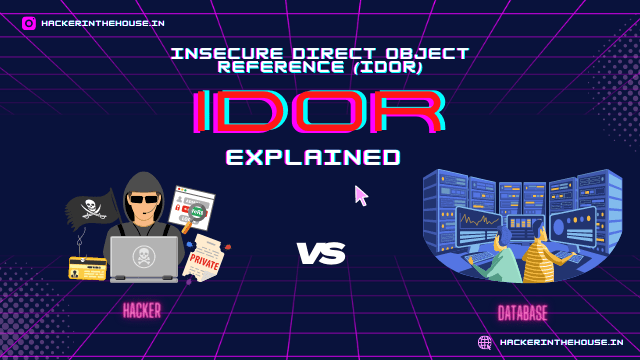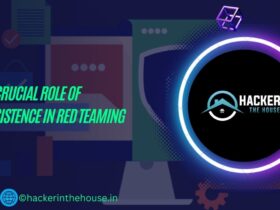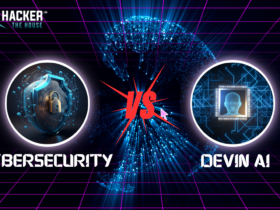Hola Everyone, Belated Diwali wishes to you all!!!

GIF Credit: whoa.in
Diwali’s ended let’s get back to learning. And I am excited to welcome you all to the next part of the Cyber Security Roadmap: Absolute Beginner Edition!!!
Wait, Before we get into part 2 of this roadmap. Pause for a while, have a look at part 1 & let’s get into the continuation.
Previous Blog (Keynote):
In our previous part, we discussed the pre-requisite knowledge that is needed to get into cyber security. The 5 divisions of pre-requisite knowledge for cyber security are:
- Basic Computer Knowledge
- Networking Knowledge
- Programming Language
- Cloud Computing
- Virtualization
Let’s get started!!!

After getting your pre-requisite knowledge, you will have an idea about computers, how it works, networks, and programming languages. So here in part 2/beginner-level knowledge let us vast our knowledge more about information security and networking.
Let me divide the blog into two parts:
- About Information Security
- Dive Deep into Computer Networking

1. About Information Security –
1.1 Introduction to Information Security
1.2 Introduction to CyberSecurity
1.3 CIA Triads
1.4 Types of Hackers
1.5 Introduction to Ethical Hacking
1.6 Skills of an Ethical Hacker
1.7 Phases of Ethical Hacker
1.8 Introduction to Pentesting

1.1 Introduction to Information Security
In simple words for easy understanding, Information technology (IT) is the use of computers to create, process, store, retrieve, and exchange all kinds of data and information. IT is typically used within the context of business operations as opposed to personal or entertainment technologies.
For more inf0: Introduction to Information Security Book
1.2 Introduction to CyberSecurity
In simple words for easy understanding, Cyber security is the practice of defending computers, servers, mobile devices, electronic systems, networks, and data from malicious attacks. It’s also known as information technology security or electronic information security.
For more info: Introduction to Cyber Security: Guide to the World of Cyber Security
1.3 CIA Triads
For more info: About CIA Triads
1.4 Types of Hackers
There are a lot of types of hackers in cyber security. But in common and day-to-day use there are three types of hackers called as:
1.4.1 Black Hat Hacker:
A black hat hacker is a cybercriminal who breaks into computer systems with malicious or criminal intent.
1.4.2 White Hat Hacker:
White hat hackers are cybersecurity experts who use their skills to find vulnerabilities in organizational networks and computer systems. The key difference between them, however, is that white hat hackers are authorized to hack these systems for the purpose of spotting security vulnerabilities before a criminal hacker can.
1.4.3 Grey Hat Hacker:
A grey hat hacker is a cybersecurity expert who finds ways to hack into computer networks and systems but without the malicious intent of a black hat hacker.
For more info: About The Types Of Hackers
1.5 Introduction to Ethical Hacking
In simple words for easy understanding, Ethical hacking is a process to scan for vulnerabilities and find potential threats on a computer or network. An ethical hacker finds the weak points or loopholes in a computer, web application, or network and reports them to the organization.
For more info: Introduction to Ethical Hacking
1.6 Skills of an Ethical Hacker
Some of the most important skills required for an ethical hacker to be a part of the future of cybersecurity are:

For more info: Skills of an Ethical Hacker
1.7 Phases of Ethical Hacking
There are 5 phases in ethical hacking, those are:
- The Reconnaissance Phase
- The Scanning Phase
- The Gaining Access Phase
- The Maintaining Access Phase
- The Covering of Tracks Phase
There is already a separate blog for Phases of Ethical Hacking on our website, Do check it out!!!
1.8 Introduction to Pentesting
A Pentest, colloquially known as Penetration Test or Ethical Hacking, is an authorized simulated cyberattack on a computer system, performed to evaluate the security of the system; this is not to be confused with a vulnerability assessment.
2. Dive Deep into Computer Networking
A computer network is a set of computers sharing resources located on or provided by network nodes. In simple, Computers use common communication protocols over digital interconnections to communicate with each other.
The topics to be covered under networking as a beginner knowledge are:
- Network Basics (Which is covered in the previous blog)
- IP & Mac Address
- Topology
- Subnet Mask
- Ports
- OSI Model
- TCP/IP Model
- TCP & UDP
- Telnet & SSH
- Ping
- SSL
- HTTP vs HTTPS
- Network Devices
- Proxy
- VPNs
- Server
For more info: Computer Networking & Fundamentals

And there we have come to the end of the “Cyber Security Roadmap: Absolute Beginner Edition 2022 (Part-2)”, You can use this blog as a roadmap to attain beginner knowledge in cyber security.
“Cyber Security Roadmap: Absolute Beginner Edition (Part-3)” – Will be posted soon!!
Thank you for reading this blog and have a nice stay there!












Leave a Reply